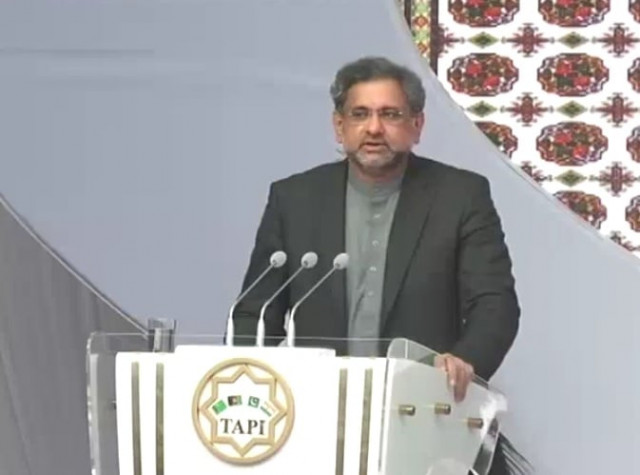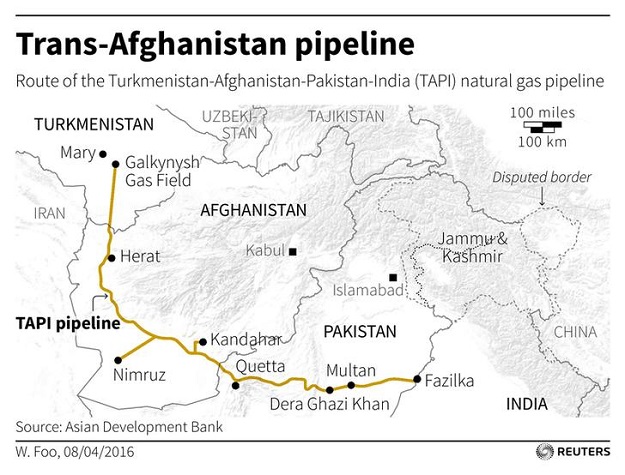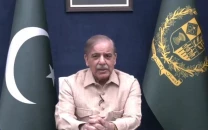We are turning TAPI into reality: PM Abbasi
The prime minister was speaking at the TAPI inaugural ceremony in Turkmenistan

PM Abbasi addresses TAPI inaugural ceremony. PHOTO: SCREENGRAB
During his address, the premier appreciated President of Turkmenistan Gurbanguly Berdimuhamadov for converting a mere gas pipeline project into an energy and communication corridor.
“This is a momentous occasion, we are turning TAPI into reality,” said PM Abbasi. “It recreates historical linkages for the region.”
“It [TAPI] will provide gas pipeline, power transmission, roads and rail and an economic zone.”
The premier observed that the project will provide shared regional and united people. “It will provide socio-economic development and peace dividends,” he said. “This project only has winners.”
Highlighting the importance of TAPI for Pakistan’s energy needs, PM Abbasi informed the gathering that the project will provide equivalent of “10 per cent for our total energy consumption, 20 per cent of current gas consumption and it equals nine million tonnes worth of LNG import and export.
PM Abbasi arrives in Turkmenistan for ground-breaking ceremony of TAPI project
The prime minister highlighted how the China-Pakistan Economic Corridor (CPEC) will provide efficient sea connectivity to the region. “Gwadar port will provide sea-linkage to the whole of Central Asia,” he said.
Also present at the ceremony were President of Afghanistan Ashraf Ghani and Minister of State for External Affairs of India MJ Akbar.
PM Abbasi had arrived in Mary city of Turkmenistan on Thursday on the invitation from the president of Turkmenistan to participate in the link-up ceremonies of TAPI pipeline and associated projects.
The prime minister held a meeting with President of Turkmenistan Gurbanguly Berdimuhamadov at Ruhiyet Palace where the two leaders highlighted the importance of TAPI pipeline project as energy, trade and transit corridor and held discussions on subjects of mutual concern, including issues of regional security, said a press release sent from Turkmenistan.
The TAPI project aims to bring natural gas from the Gylkynish and adjacent gas fields in Turkmenistan to Afghanistan, Pakistan and India. The ADB is acting as the facilitator and coordinator for the project. The feasibility study, proposed to lay a 56-inch diameter 1,680 KM pipeline with design capacity of 3.2 billion cubic feet of natural gas per annum (Bcfd) from Turkmenistan through Afghanistan and Pakistan up to Pak-India border.
 PHOTO: REUTERS
PHOTO: REUTERS
















COMMENTS
Comments are moderated and generally will be posted if they are on-topic and not abusive.
For more information, please see our Comments FAQ